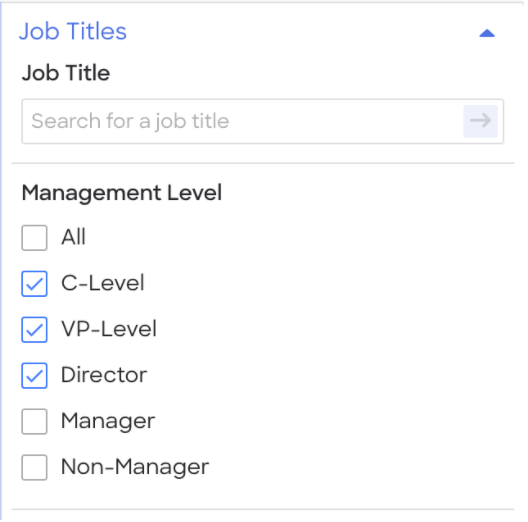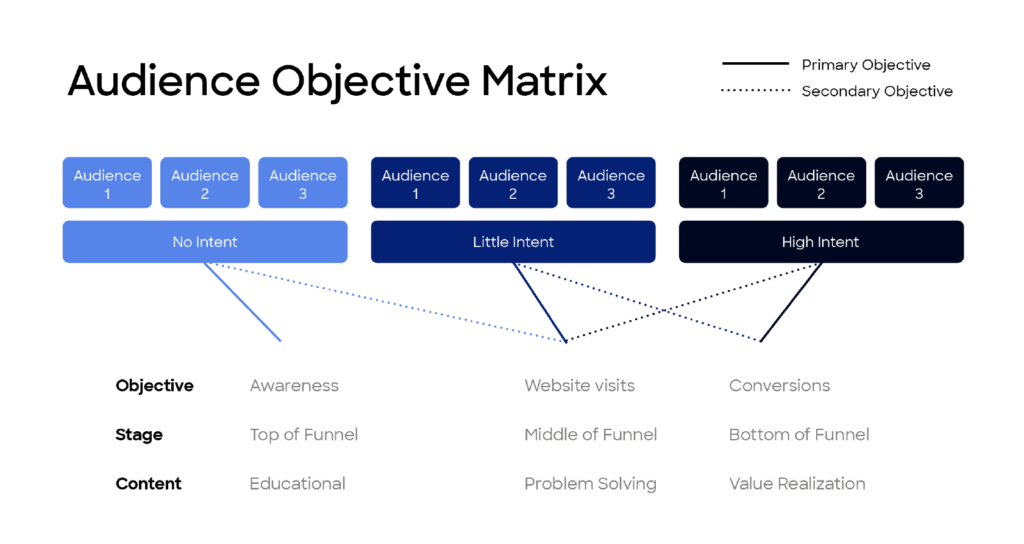Let’s cut to the chase: When it comes to digital advertising, intentionality is everything.
You should know exactly who you’re targeting, why you’re targeting them, and what content will resonate. While there’s no magic recipe to achieve perfect results, you need to be relevant and targeted in order to have an efficient digital marketing program.
“With today’s clutter in the digital space, often the relevancy of your offer is the only differentiator you have,” says Mitchell Hanson, director of demand generation at ZoomInfo. “And to stay relevant, you need to break down your audiences based on as many nuances as you can get your hands on, and then try to prioritize.”
Implement these three tips to get the most bang for your buck and elevate your marketing program to the next level.
Trick #1: Target (and reach) key decision-makers
After you’ve defined your ideal customer, pull together a comprehensive list of prospective accounts that meet your criteria.
For example, you may want to target SMBs and mid-size companies in the pharmaceutical industry on the east coast. Once you have a list of relevant accounts—let’s say 500 of them—identify the key decision-makers at each of those companies. Look for titles such as CEO, CFO, and VP of sales.
To do that, you need robust, high-quality data. With the right B2B data provider, you can pull key decision makers’ names and contact information at each account, then export that list into your digital ad platform to create your campaign.

The primary KPI to monitor is match rate.
Match rate indicates the percentage of people from your exported list of contacts that can be correctly identified on your digital ad platform. A high match rate means you’re reaching the right people and positioning yourself for a healthy digital advertising ROI.
(At ZoomInfo, we prove that this works. Our match rate is consistently up to 2x the industry average!)
ZoomInfo Marketing
Finally, ABM with data you can trust.
Trick #2: Eliminate undesired contacts
Digital marketers often overlook this step. Get rid of everyone you don’t want to target. That means filtering out bad-fit prospects, competitors, and even current customers. By cleaning up your audience pool, you can provide targeted, relevant ads to the most promising people.
Without this step, you waste precious marketing budget and risk hurting conversion rates advertising to people who aren’t a good fit.
So, how do you do this?
Set up your ad platform to avoid prospects you don’t want to target. Let’s say you want to go after key decision-makers in your campaign. You’ll probably exclude anyone who is unpaid, an intern, or entry-level. Or if you want to target new business, you should suppress all existing customers.

Another way to hone your targeting is by using your B2B data provider to filter for people’s attributes and identify those you want to exclude. You can then export the contact list to your digital ad platform and create more targeted, efficient campaigns.
Trick #3: Use intent data to serve relevant content
Your content will have a greater impact if it aligns with your audience’s pain points.
“Something people tend to forget is content becomes stagnant really, really quickly,” says Hussam AlMukhtar, senior director of demand generation at ZoomInfo. “The way you move past that stagnation is by understanding where your audience is in their buyer’s journey and speaking to their current needs.”
By understanding how much prospects already know about your product or solution, you can serve them the next most logical piece of content to push them further down the funnel.
That’s where intent data comes in.
Intent data notifies you when prospects show interest in learning more about—and potentially purchasing—a solution like yours by consuming content relevant to your business. The data includes Google searches, website visits, content downloads, and event registrations.
This information is not black or white. Intent signals show a purchasing spectrum, ranging from no or little intent to high intent. Each intent type provides clues as to where your audience is in the buyer’s journey.

This is where the audience objective matrix comes into play. AlMukhtar created this visual representation of the matrix to help marketers segment and serve content to audiences with differing intent levels.
Here’s how it works.
Let’s say you have three audience segments. Audience 1 is SMBs in the SaaS industry in San Francisco; Audience 2 is mid-size businesses in the retail industry in Chicago; and Audience 3 is enterprise-size financial businesses in Manhattan. Within each one of these audiences, there are prospects with differing levels of intent.
If the audience has no intent, they may be unaware of the problem your business solves or they may not be looking for a solution right now. Your primary objective is to pique their interest and generate intent by educating them with upper-funnel content like infographics and blogs.
If they have little intent, they may be exploring options and educating themselves on a problem relevant to your business. Your goal is to push them further down the funnel with content like eBooks or whitepapers.
If they have high intent, they may be actively seeking a solution to their problem. Your objective is to convince them that you are the best solution by serving them bottom-funnel content like case studies or fact sheets.
Because intent is merely an indicator of how someone is thinking, it’s not foolproof. Therefore, your secondary objective is to use a small portion of your marketing budget to serve each audience segment content that speaks to different points in the buyer’s journey.
For example, you may spend 90% of your budget serving a no-intent audience top-of-funnel content, and 10% of your budget serving them middle-of-funnel content—just in case someone was accidentally placed in the wrong audience. This helps you cover your bases.
Use data-driven audience targeting for killer ROI
By targeting key-decision makers, filtering out bad-fit prospects, and strategically serving content to your audience based on their level of intent—you cut through the noise and set the stage for high ROI.


